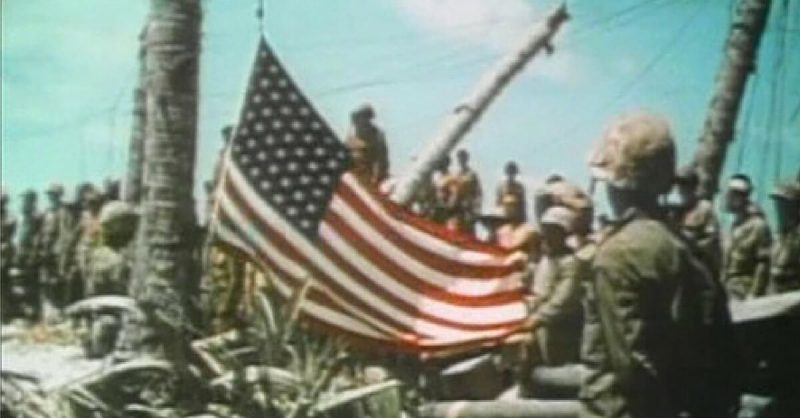The Battle of Tarawa was one of the more terrible American experiences in the Pacific theater of World War Two. It was one that would shape the future of amphibious assaults.
In late 1943, the United States launched attacks in the central Pacific. These were meant to speed up victory in the war by drawing Japanese forces away from larger offensives. The Tarawa Atoll, part of the Gilbert Islands, was one of the targets of this advance.
Planning and Preparation
Both sides prepared extensively for the fighting on Tarawa though the Americans did so from a position of ignorance.
Tarawa is an atoll made up of fifteen small islands in the shape of a triangle, their total land area only twelve square miles. In the center is a lagoon, and reefs shelter many parts of the atoll. The British, who had governed the atoll before the war, were remarkably ill-informed about it.
All their maps were over a century old, and they had no records of the tides and currents in the surrounding sea. Aerial reconnaissance provided some information about the islands and the Japanese defenses, but the attack would still be launched through a fog of ignorance.
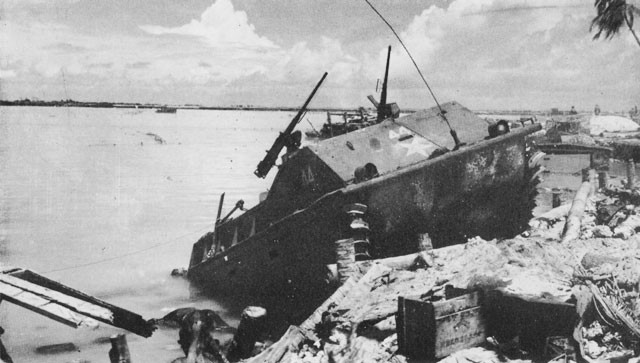
The focus of both the Japanese defenders and the Americans attackers was Betio, which had been the British headquarters. Just two miles long and a few hundred yards wide, this flat island guarded the only entrance to the lagoon, and had a pier for small boats, though this could only be used at high tide. Having built their main airfield in the region there, the Japanese forces were concentrated on this spot.
These defences included 200 artillery pieces. Thanks to the small, flat, featureless nature of the island, almost all of them could hit almost every one of its beaches. At the tops of those beaches were walls of palm logs and wire up to five feet high, behind them rifle pits and machine-guns. Behind those were fortified machine-gun emplacements of coral, logs and reinforced concrete, hidden with sand. Beyond those were pillboxes holding anti-tank guns and field guns.
To make the landings, the Americans gathered Amtracs – amphibious tractors. These had previously only been used to bring supplies in but were deemed better than landing craft given the uncertain terrain. Armour plates and machine-guns were bolted onto them in preparation for the landings.
Landing on Betio
The 2nd Marines, who would head the landings on the 20th of November, believed that the mission was going to be a piece of cake. They could not have been more wrong.
On the night of the 19th of November, things started going wrong. Strong currents created chaos as troops transferred to their landing craft. Overnight air raids had not taken out the shore batteries as they were expected to. On the command ship, the USS Maryland, vibrations from the ship’s guns took out the communications equipment, disrupting coordination between the naval and air attacks and reducing their effectiveness.
Rear-Admiral Hill had calculated that the Amtracs would reach the shore in forty minutes, but this proved optimistic. As the bombardment of the shore stopped to avoid hitting the troops, they were still out at sea and exposed.
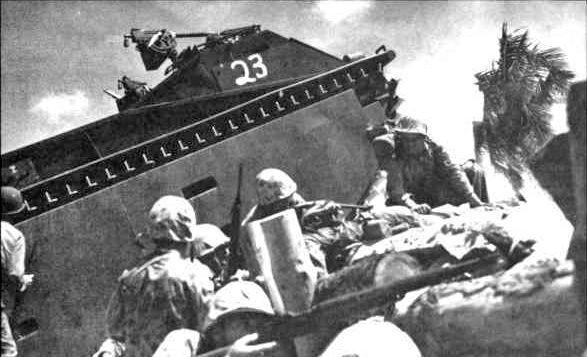
At ten past nine in the morning, the first troops reached the island. Facing little resistance, they ran up the beaches to the barrier of the log wall. All bombardment had ended ten minutes before, and the Japanese had had time to recover. Now facing ready defenders, most of the Americans became pinned down outside the wall.
Reefs surrounded many of the beaches 800 to 1,200 yards out. The water above them was shallower than the Americans had hoped, and most of the Amtracs became stuck. The soldiers had to disembark and wade ashore under enemy fire, some of them vanishing into holes in the reef and drowning. Officers and NCOs led the way and most were killed, leaving the troops leaderless. Communications equipment became waterlogged and failed. Troops became scattered by Japanese fire.
One of the problems with the operation was a lack of sufficient transports. Even as the second wave of men was landing, and with them the first tanks, the Amtracs were being sent back for more men. The numbers that should have given the Americans a huge advantage were not in place until late on.
Beyond the First Bloody Day
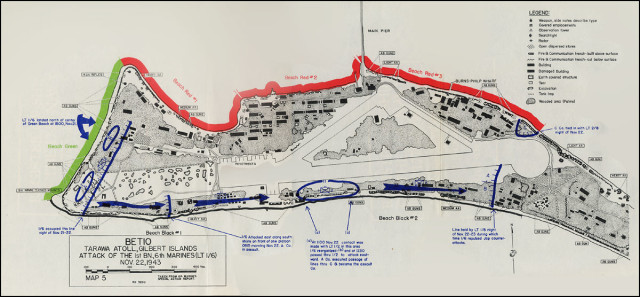
Miscommunication blighted the operation. As a result, the 1st Battalion spent a miserable night bobbing up and down in their landing craft before landing on the second day, not using a deep water channel that had been found, but once again wading across the reefs in the face of enemy gunfire.
Despite their struggles, the Americans were finally making headway. Air strikes weakened the Japanese artillery, and Major Ryan’s 3rd Battalion were able to advance, clearing the western beach and the coast opposite the pier.
More troops landed on the second evening. Meanwhile, an air attack on the neighboring island of Bairiki blew up a Japanese fuel dump, allowing that island to be easily taken, cutting off the Japanese retreat.
On the third day, the Americans made advances at various points across the island, breaking out of the beachheads in which most of them had been trapped. Light tanks proved ineffective against the sturdy Japanese defenses, but flame-throwers and M4 medium tanks allowed them to take out many enemy positions. By the end of the day, most of the remaining Japanese were contained in the east end of Betio. The remainder were mopped up over the following days, and by the 28th of
By the end of the day, most of the remaining Japanese were contained in the east end of Betio. The remainder were mopped up over the following days, and by the 28th of November the island was cleared.
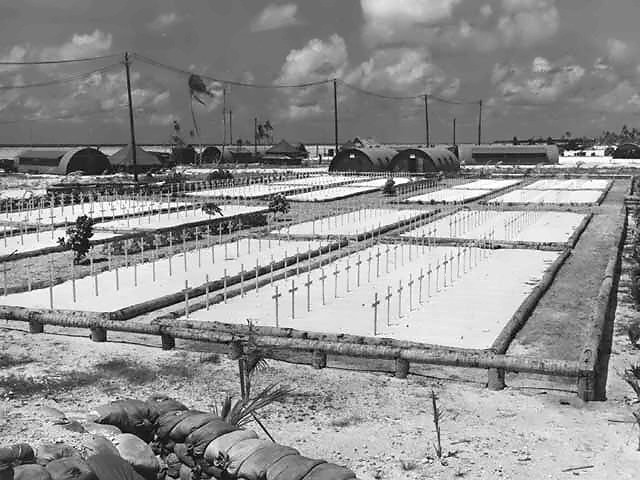
The defenders lost 4,690 dead, the attackers 1,000 dead and 2,100 wounded. But though Tarawa was a victory, the high cost in American lives shocked the public.
The military learned vital lessons from the invasion of Tarawa. The organization of amphibious landings was changed, and by D-Day they would be far more effective.
